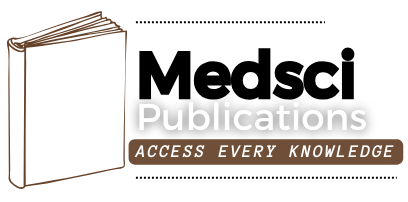The Relationship Between Post-Traumatic Stress Disorder and Autism for Children Under 10 Years, Parents’ Perspective: A Case Control Study
DOI:
https://doi.org/10.55489/njcm.160820255419Keywords:
Autism Spectrum Disorder, Post-Traumatic Stress Disorder, Gender Differences, CPSS-V SRAbstract
Background: Post-Traumatic Stress Disorder (PTSD) occurs as a result of exposure to stressful events such as assaults, accidents, and disasters and poses a significant risk to a child’s mental health. Children with Autism Spectrum Disorder (ASD) are at a higher risk of developing PTSD compared to their neurotypical peers. This research aimed to investigate the correlation between PTSD & ASD in children under 10 years old.
Methodology: A case-control study was conducted in Karbala Governorate from October 2024 to February 2025 among 80 autistic children and 160 non-autistics children. Data were obtained using a standardized questionnaire form of the Child PTSD Symptom Scale for DSM-V (CPSS-V SR) administered to cases and controls through direct interviews with the parents of the children. The questionnaire includes four domains (socio-demographic characteristics, family medical history, frightening or stressful events, and child PTSD symptom scale).
Results: Indicated that autistic children were 4.33 times more likely to develop PTSD than non-autistic children with a confidence interval (1.264-14.859), which is statistically significant. Prevalence rates of probable PTSD were 10% among cases and 2.5% among controls. The probable PTSD diagnosis was higher among females (5.9%) than males (4.5%). The age group of 8-9 years showed the highest rate, accounting for 66.66% of probable PTSD cases. Stepwise regression analyses revealed several variables as highly significant predictors of PTSD diagnosis in children.
Conclusion: Post-traumatic stress disorder was four times more likely to develop in autistic children compared to non-autistic children, with females being more susceptible than males, and older children at a greater risk of developing PTSD than their younger counterparts.
References
Hirota T, King BH. Autism Spectrum Disorder: A Review. JAMA. 2023;329(2):157-168. DOI: https://doi.org/10.1001/jama.2022.23661 PMid:36625807
American Psychiatric Association. Diagnostic and statistical manual of mental disorders: DSM-5. 5th ed. Arlington (VA): American Psychiatric Publishing; 2013. DOI: https://doi.org/10.1176/appi.books.9780890425596
Mavranezouli I, Megnin Viggars O, Daly C, et al. Psychological and psychosocial treatments for children and young people with PTSD: a network meta-analysis. J Child Psychol Psychiatry. 2020;61(1):18-29. DOI: https://doi.org/10.1111/jcpp.13094 PMid:31313834
Sareen J. Posttraumatic stress disorder in adults: impact, comorbidity, risk factors, and treatment. Can J Psychiatry. 2014;59(9):460-467. DOI: https://doi.org/10.1177/070674371405900902 PMid:25565692 PMCid:PMC4168808
Paul A, Gallot C, Lelouche C, Bouvard MP, Amestoy A. Victimization in a French population of children and youths with autism spectrum disorder: a case control study. Child Adolesc Psychiatry Ment Health. 2018;12:48. DOI: https://doi.org/10.1186/s13034-018-0256-x PMid:30524501 PMCid:PMC6276214
Rumball F, Parker R, Madigan AE, Happe F, Spain D. Elucidating the presentation and identification of PTSD in autistic adults: a modified Delphi study. Adv Autism. 2024;10(3):163-184. DOI: https://doi.org/10.1108/AIA-08-2023-0053
Haruvi-Lamdan N, Horesh D, Golan O. PTSD and autism spectrum disorder: co-morbidity, gaps in research, and potential shared mechanisms. Psychol Trauma. 2018;10(3):290-299. DOI: https://doi.org/10.1037/tra0000298 PMid:28726442
Hollocks MJ, Lerh JW, Magiati I, Meiser-Stedman R, Brugha TS. Anxiety and depression in adults with autism spectrum disorder: a systematic review and meta-analysis. Psychol Med. 2019;49(4):559-572. DOI: https://doi.org/10.1017/S0033291718002283 PMid:30178724
Morina N, Wicherts JM, Lobbrecht J, Priebe S. Remission from post-traumatic stress disorder in adults: a systematic review and meta-analysis of long-term outcome studies. Clin Psychol Rev. 2014;34(3):249-255. DOI: https://doi.org/10.1016/j.cpr.2014.03.002 PMid:24681171
Polimanti R, Ratanatharathorn A, Maihofer AX, Choi KW, Stein MB, Morey RA, et al. Association of economic status and educational attainment with posttraumatic stress disorder: a Mendelian randomization study. JAMA Netw Open. 2019;2(5):e193447. DOI: https://doi.org/10.1001/jamanetworkopen.2019.3447 PMid:31050786 PMCid:PMC6503495
Peterson JL, et al. Trauma and autism spectrum disorder: review, proposed treatment adaptations and future directions. J Child Adolesc Trauma. 2019;12(4):529-547. DOI: https://doi.org/10.1007/s40653-019-00253-5 PMid:31819782 PMCid:PMC6901292
Foa EB, Asnaani A, Zang Y, Capaldi S, Yeh R. Psychometrics of the Child PTSD Symptom Scale for DSM-5 for trauma-exposed children and adolescents. J Clin Child Adolesc Psychol. 2018;47(1):38-46. DOI: https://doi.org/10.1080/15374416.2017.1350962 PMid:28820616
IBM Corp. IBM SPSS Statistics for Windows, Version 28.0. Armonk (NY): IBM Corp; 2021.
Haruvi-Lamdan N, Horesh D, Zohar S, Kraus M, Golan O. Autism spectrum disorder and post-traumatic stress disorder: an unexplored co-occurrence of conditions. Autism. 2020;24(4):884-898. DOI: https://doi.org/10.1177/1362361320912143 PMid:32245333
AlShawi AF. Prevalence of posttraumatic stress disorders among a sample of internally displaced persons in Iraq: a preliminary study. J Community Med Health Educ. 2018;8(2):599. DOI: https://doi.org/10.4172/2161-0711.1000599
Asnaani A, et al. An innovative mobile game for screening of pediatric PTSD: a study in primary care settings. J Child Adolesc Trauma. 2021;14(3):357-366. DOI: https://doi.org/10.1007/s40653-020-00300-6 PMid:34471454 PMCid:PMC8357874
El-Khodary B, Samara M, Askew C. Traumatic events and PTSD among Palestinian children and adolescents: the effect of demographic and socioeconomic factors. Front Psychiatry. 2020;11:4. DOI: https://doi.org/10.3389/fpsyt.2020.00004 PMid:32296346 PMCid:PMC7137754
Stewart GR, et al. Traumatic life experiences and post-traumatic stress symptoms in middle-aged and older adults with and without autistic traits. Int J Geriatr Psychiatry. 2022;37(2):e5669. DOI: https://doi.org/10.1002/gps.5669 PMid:34994472
Jeong L, Li D. Psychological well-being from sports injuries in adolescence: a narrative review. Cureus. 2024;16(7):e64018. DOI: https://doi.org/10.7759/cureus.64018
Yang SX, Cheng S, Su DL. Sports injury and stressor-related disorder in competitive athletes: a systematic review and a new framework. Burn Trauma. 2022;10:tkac017. DOI: https://doi.org/10.1093/burnst/tkac017 PMid:35702266 PMCid:PMC9189434
Molua CO. Impact of natural disasters on mental health and behavioral changes. J Ment Heal Issues Behav. 2021;1(2):21-33. DOI: https://doi.org/10.55529/Jmhib.12.21.33
Song Y, Zhao Y, Baranova A, Cao H, Yue W, Zhang F. Causal association of attention-deficit/hyperactivity disorder and autism spectrum disorder with post-traumatic stress disorder. Psychiatr Genet. 2024;34(2):37-42. DOI: https://doi.org/10.1097/YPG.0000000000000357 PMid:38288984 PMCid:PMC10919267
Kemal S, Nwabuo A, Hoffmann J. Mental health and violence in children and adolescents. Pediatr Clin North Am. 2023;70(6):1201-1215. DOI: https://doi.org/10.1016/j.pcl.2023.06.011 PMid:37865440
Echeburúa E, Amor PJ. Keys to emotional well-being and resilience in minors who have suffered trauma. Ansiedad y Estrés. 2022;28(3):153–159. DOI: https://doi.org/10.5093/anyes2022a18
Downloads
Published
How to Cite
Issue
Section
License
Copyright (c) 2025 Ahmed Hassan Alhussaini, Maytham Salim AL-Nasrawii

This work is licensed under a Creative Commons Attribution-ShareAlike 4.0 International License.
The authors retain the copyright of their article, with first publication rights granted to Medsci Publications.










